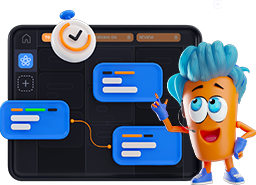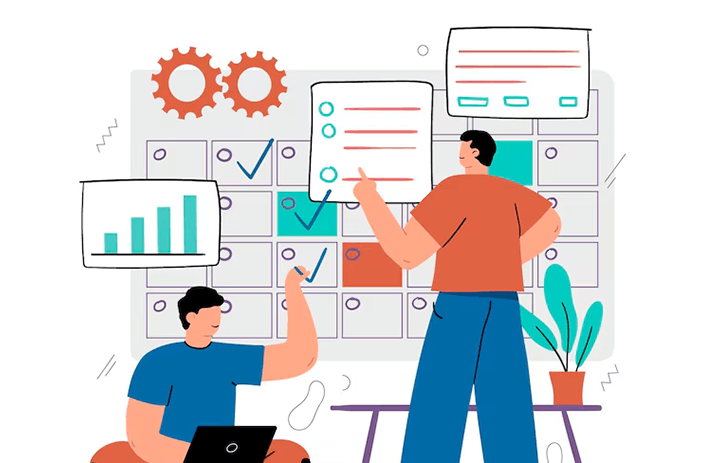
Click the button to start reading
5 Soft and Hard Skills to Crushing It as a Clinical Trial Project Manager
Even if you already know all the ropes of project management, clinical trials can throw a curveball. With all its procedures and protocols and phases, a clinical trial is a world unto its own. It’s exciting to be a part of the research that goes into a major medical breakthrough, but for anyone new to clinical trial management, the process can be bewildering and overwhelming. From research to budgeting to timelines, how does a project manager keep track of it all?
While clinical trials do pose a challenge, a good plan ensures success. The right approach requires its own assortment of soft and hard skills. In this article, we’ll break down some of those skills. But first, let’s go over the basics with a brief overview of a clinical trial.

Clinical Trials Defined
Let’s briefly define the components and stages of a clinical trial, including the purpose, the method and the stages of one.
The Purpose
Just what is the objective of a clinical trial? Essentially, it’s a method for determining whether or not a new medical treatment is safe and effective.
Every medical breakthrough in recent history began as a clinical trial. Everyday drugs like ivermectin, ibuprofen, and Tylenol came onto the market after passing through the phases of a clinical trial. It’s also the method doctors utilize in order to research a cure for cancer, and to study the effects of smoking.
The Method
Clinical trials utilize the scientific method of starting with a hypothesis, then testing the hypothesis to determine whether or not it is correct.
In its most basic terms, the process goes something like this: Scientists develop a drug or treatment for a specific condition, then try it out on a sample group with the intent to understand its risks and benefits. Based on the results from this sample, the team determines whether or not the treatment works. If it does, then the drug or treatment is brought to the market. If it does not, then they either pivot and modify the treatment, or abandon the endeavor altogether.
While this brief description makes clinical trials sound simple and straightforward, the reality is that the process is long and entails numerous complex protocols and procedures. Clinical trials can last as long as a decade. They can be pricey, costing into the millions of dollars. Generally, they are sponsored by drug companies or else by the government.
The Four Phases of Clinical Trials
Clinical trials are completed in four distinct phases. Let’s briefly describe each phase, and the objectives and desired outcomes for each.
Phase 1: During phase one, scientists develop a novel agent in a laboratory. They then cautiously proceed to test the new treatment or drug. Oftentimes, preliminary testing is conducted on animals before it’s tested on a group of volunteers. The desired objective at phase one is to discover any negative side effects of the treatment, and to establish a safe dosage.
Phase 2: During phase two, eligibility for the trial group is narrowed down to specific criteria, in order to more accurately study the effects and impact of the dosage.
Phase 3: In order for a new drug to come to market, it must perform better than the current standard of care. And so at phase 3, the treatment is used in several studies where it is compared to this current standard. These studies are strategically established to make them as objective as possible. Sometimes, in order to eliminate any bias in reporting, they are “blinded,” meaning that neither the patient nor the doctor knows what type of treatment the patient receives.
Phase 4: By phase 4, a drug that has proved suitable is already on the market. This stage is about gathering more information on the drug’s effectiveness, and making modifications to increase its safety and efficacy.
With this brief background on clinical trials, let’s now dive into the ins and outs of managing one.

The 5 Soft and Hard Skills of a Clinical Trial Manager
Clinical trials come in various shapes and sizes. Some organizations have fewer than 100 people, while others have ten thousand or more. Some organizations utilize a matrix-based structure, where the team doesn’t report to the project manager, but rather to the leader of their functional groups (the medical team reports to the medical manager, the safety team to safety manager, etcetera).
While the challenges and skills vary depending on the nature of the clinical trial, in any organization the project manager’s central duty is to stay abreast of everyone through emails and frequent meetings. A few other skills apply across the board as well. Let’s go over five of them.
1. Know Clinical Study Protocol
The role of a project manager entails a specific set of skills, and any project manager must be sharp in the fundamentals.
With clinical trial management, it’s necessary to develop industry knowledge as well. This includes things like knowing the inclusion and exclusion criteria for studies (who can be included and who cannot), and the FDA guidelines. It also means knowing the adverse event reporting requirements, and understanding the procedure that’s being tested.
Gaining some of this basic understanding is gained by talking to doctors, or shadowing them during surgeries and other procedures.
2. Develop Tool Proficiency
So many of the components to managing a clinical trial are completed with the assistance of a tool. For some simple projects, an Excel spreadsheet is sufficient for keeping track of the budget, while a complicated trial requires something more sophisticated. Here are a few things to look out for when selecting tools.
Easy to Understand
Gaining buy-in is critical to keeping a project on schedule and within budget. Communication is part and parcel to this buy-in. A software that makes it easy to identify milestones and dates keeps the forward momentum strong. A convoluted software, on the other hand, turns people off, and no one knows what is going on but you.
Attractive and Intriguing
When presenting data and key research to stakeholders and executives, it’s necessary to put your best foot forward. Developing proficiency in a tool like Powerpoint, and supplementing images with editing software such as Canva, makes it possible to put together a presentation that keeps everyone’s attention and brings them up to speed quickly.
3. Be a Servant Leader
Developing team momentum is critical in order to bring a clinical trial over finish lines. This momentum is cultivated through strategic leadership. Understanding how you come across and communicating in a way that validates and supports every individual keeps rapport strong. A likable leader listens to frustrations and works to remedy difficulties.
4. End Endless Emails
Email is a useful tool, but when used to resolve issues or make big decisions, it more often than not leaves the team stuck.
As much as possible, a successful manager builds regular communication around face-to face communication. This allows tone and body language to come across. When emails must be used, it’s helpful to format them with bullets and headlines for quick and easy understanding.
5. Monitor Fixed Costs
Fixed costs include things like rent and overhead. And they eat away at a budget at every stage in the clinical trial. Monitoring the schedule minimizes these fixed costs and keeps things within budget.
The pacing of the trial, then, is key. Promptly getting all of the patients enrolled for each trial allows the trial to move onto the next stage. A slow enrollment, on the other hand, means that the trial drags on into another month or quarter, and the fixed costs increase. One strategy to keep tabs on the budget is to refresh the budget monthly or quarterly.
Conclusion
If you’re completely new to clinical trials, the process can seem complicated. But just by mastering a few skills, success can be yours in no time.
What is your biggest challenge to managing a clinical trial?
















